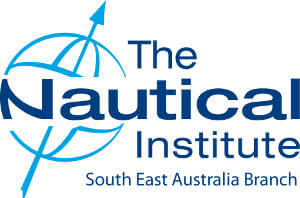How Australia Managed to Eradicate its Zebra Mussel Infestation
With great effort, Australian responders eliminated one of the world's most persistent marine invasives

The outbreak of the 'Zebra Mollusc' was Australia's worst-ever marine invasive species infestation, highlighting the importance of ships' ballast water management and hull biofouling control.
On 27 March 1999, marine biologist divers detected a large population of unfamiliar molluscs in a Darwin marina. These were later identified as Black Striped Mussels, also known as 'Zebra Molluscs.' They are native to the Atlantic (Colombia to Mexico) and also found in Asia. Mature zebra molluscs produce 50,000 eggs per incubation. There were now tens of millions of molluscs in Darwin harbour - up to 10,000 per square metre in Cullen Bay.
Ships carry ballast water on cargo voyages. Thousands of tonnes of water are drawn in at a foreign port, then discharged at another port. In this water, millions of marine organisms are transported across to non-native environments.
An emergency taskforce was established to eradicate the exploding mollusc population. About 420 vessels were identified as being at risk (either in, or recently in, the infected marinas). Over 280 personnel, 28 divers, support teams, the Australian Defence Force, and fisheries & quarantine agencies were mobilised. Molluscs were found on every single static structure in the marinas. The only cure was a 100% kill.
Several hundred tonnes of liquid sodium hypochlorite (chlorine) was needed for successful treatments. The sole supplier in Darwin produced only 15 tonnes a year. Truck drivers from Alice Springs were rostered to bring sodium hypochlorite in 10 special rubber lined trucks from Melbourne, Adelaide and Sydney (approx 4,000km).
An initial three tonnes of sodium hypochlorite was poured into the Cullen Bay lock to kill off any mussel larvae and act as a sterile ‘plug’ between the marina and the Harbour. Pumps were used to aerate 12 hectares of water surface.
Unfortunately, many molluscs survived the chlorine treatment. Scientists determined that copper sulphate might work. Around 6,000 tonnes of copper sulphate were added to the marinas. Vessels were hauled out of the water for treatment. Strict orders were put on masters, including navigation restrictions, cooling water flushing with copper sulphate, and steam cleaning on hardstands for seven days.
A 100% kill was eventually declared on 23 April, and the taskforce demobilised on 29 April. The operation had cost AU$2.2 million and taken hundreds of personnel. Queensland, Western Australia and the Northern Territory remained on high-alert for years afterwards.
The International Maritime Organization Ballast Water Management Convention took effect on 8 September 2017, and the Zebra mollusc outbreak was a prime example of why it's so important.
 Cameron Livingstone MNI is the secretary of the South Eastern Australia Branch of The Nautical Institute, which covers the region of New South Wales and the Australian Capital Territory. The Institute's aim is to promote professionalism, best practice and safety throughout the maritime industry and to represent the interests of its members.
Cameron Livingstone MNI is the secretary of the South Eastern Australia Branch of The Nautical Institute, which covers the region of New South Wales and the Australian Capital Territory. The Institute's aim is to promote professionalism, best practice and safety throughout the maritime industry and to represent the interests of its members.
The opinions expressed herein are the author's and not necessarily those of The Maritime Executive.

